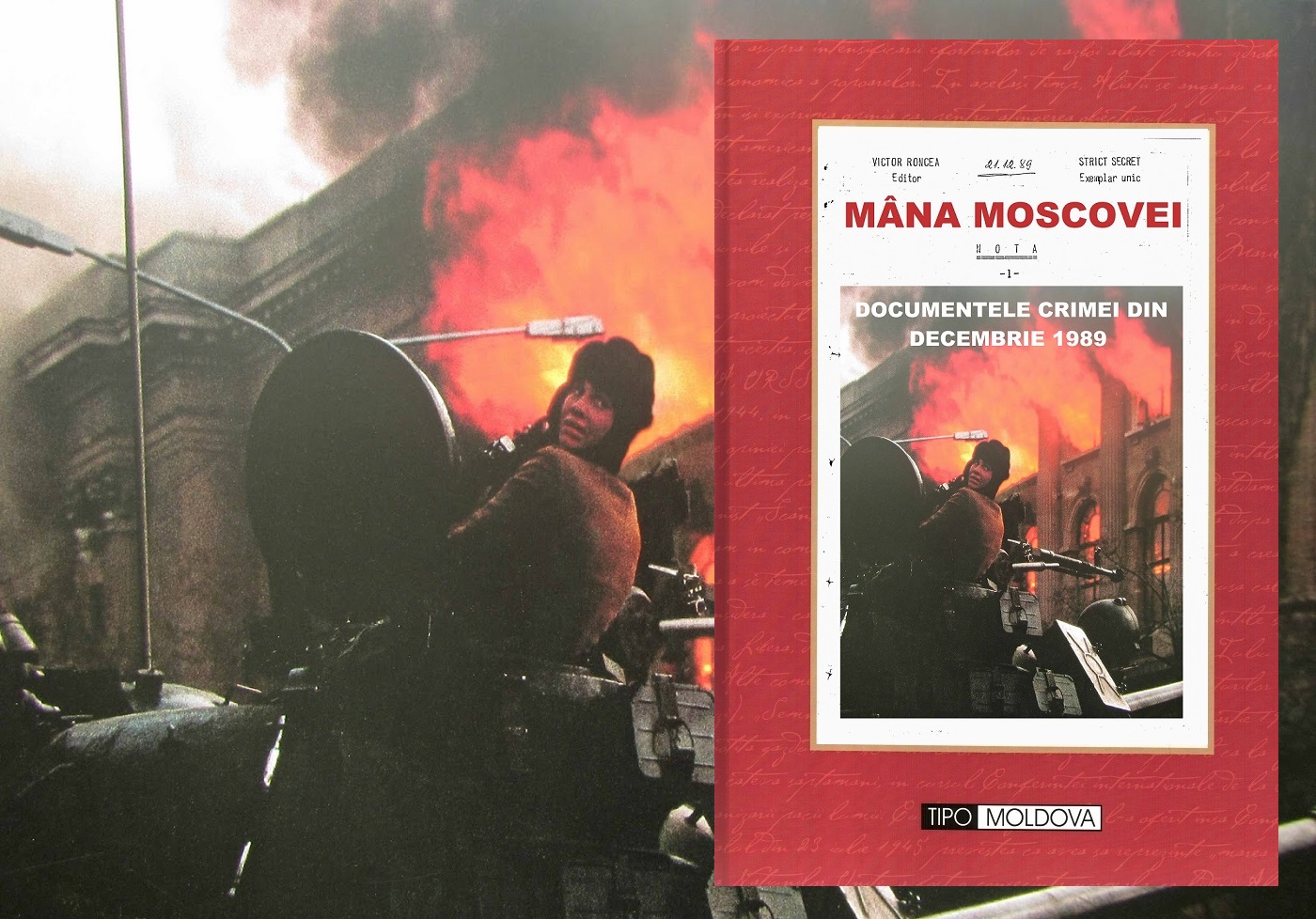 Articolele de mai jos, prezente in bibliografia cartii profesorului dr Larry Watts, “Fereste-ma, Doamne de prieteni“, si a studiilor sale sale de la Woodrow Wilson Center, arata nivelul inalt de incredere la care sa ajunsese in relatiile secrete dintre Romania si Statele Unite, chiar si dupa “defectarea” agentului sovietic Ion Mihai Pacepa, a carui principala misiune peste ocean a fost tocmai compromiterea acestor relatii. In acelasi sens, printre documentele scoase la lumina pentru Romania de dr Larry Watts se gaseste si un Memorandum secret din 1975, in care responsabili de la Casa Alba si Departamentul de Stat discuta despre cererea lui Ceausescu de a cumpara de la americani rachete anti-tanc TOW, rachete Redeye si Stinger si echipament de comunicatii in spatiu pentru Boeing-ul prezidential al Romaniei. Conform unui alt Memorandum, de intelligence, realizat de CIA pentru decidentii americani, publicat de asemenea de Larry Watts pe site-ul sau, cu doar un an inainte de “defectarea” lui Pacepa, Washington-ul confirma pozitia disidenta a Romaniei lui Ceausescu fata de URSS si relatia speciala pe care o avea statul roman cu Statele Unite (facsimil). Prezentam mai jos articolele din presa americana a anilor ’90, care dezvaluie din secretele Romaniei in Razboiul Rece, asa cum o face si profesorul Larry Watts. Istoricul american urmeaza sa sustina o conferinta publica pe aceste teme joi, 10 mai, ora 12.00, la Casa Academiei din Bucuresti, str 13 Septembrie nr 13, unde va prezenta in premiera introducerea volumului al II-lea al lucrarii “Fereste-ma, Doamne, de prieteni“.
Articolele de mai jos, prezente in bibliografia cartii profesorului dr Larry Watts, “Fereste-ma, Doamne de prieteni“, si a studiilor sale sale de la Woodrow Wilson Center, arata nivelul inalt de incredere la care sa ajunsese in relatiile secrete dintre Romania si Statele Unite, chiar si dupa “defectarea” agentului sovietic Ion Mihai Pacepa, a carui principala misiune peste ocean a fost tocmai compromiterea acestor relatii. In acelasi sens, printre documentele scoase la lumina pentru Romania de dr Larry Watts se gaseste si un Memorandum secret din 1975, in care responsabili de la Casa Alba si Departamentul de Stat discuta despre cererea lui Ceausescu de a cumpara de la americani rachete anti-tanc TOW, rachete Redeye si Stinger si echipament de comunicatii in spatiu pentru Boeing-ul prezidential al Romaniei. Conform unui alt Memorandum, de intelligence, realizat de CIA pentru decidentii americani, publicat de asemenea de Larry Watts pe site-ul sau, cu doar un an inainte de “defectarea” lui Pacepa, Washington-ul confirma pozitia disidenta a Romaniei lui Ceausescu fata de URSS si relatia speciala pe care o avea statul roman cu Statele Unite (facsimil). Prezentam mai jos articolele din presa americana a anilor ’90, care dezvaluie din secretele Romaniei in Razboiul Rece, asa cum o face si profesorul Larry Watts. Istoricul american urmeaza sa sustina o conferinta publica pe aceste teme joi, 10 mai, ora 12.00, la Casa Academiei din Bucuresti, str 13 Septembrie nr 13, unde va prezenta in premiera introducerea volumului al II-lea al lucrarii “Fereste-ma, Doamne, de prieteni“.
U.S. Paid Romania for Soviet Arms, Report Says
Published: May 06, 1990
Mr. Caeusescu himself probably knew about the operation, but was not personally involved in the transactions, the article said, quoting unidentified intelligence sources.
The payments were coordinated by the Central Intelligence Agency and yielded significant discoveries, including air defense systems and other tactical, non-nuclear weaponry, the paper said. It said the transactions ended in December with the downfall of the Ceausescu regime.
Attempts to reach intelligence officials tonight to confirm the report were unsuccessful.
Swiss Bank Deposits
On the Romanian side, The Post said, the connection led ultimately to Marin Ceausescu, head of the Romanian trade mission in Vienna, who was found dead in Vienna shortly after the fall of his brother’s Government, and Lieut. Gen. Ilie Ceausescu, who remains in custody in Romania.
The brothers, who were ostensibly hard-line Communists, were said to have set up an intricate deal by which American intelligence officials could pay them for the Soviet weaponry. This reportedly included deposits of substantial portions of the arms payments in a Swiss bank account and a promise to guarantee safe passage for the brothers if the deal became public.
Among the weapons that The Post said the United States acquired through the transactions were the Shilka anti-aircraft system, mobile rocket launchers and radar systems.
The operation was the most successful part of a much larger weapons-buying scheme in Eastern bloc countries, the article said. (NYT)
U.S. — USED ROMANIA TO GET SOVIET ARMS
By MICHAEL WINES, Special to The New York Times
Published: May 07, 1990
The United States acquired some of the Soviet Union’s most advanced weaponry over the last decade from underground arms traders, corrupt military officials and even Communist political leaders, current and former officials said today.
Created by the Pentagon and run largely by the Central Intelligence Agency, the weapons-buying programs have spent several hundred million dollars since 1980 in Eastern Europe and in third world countries that were Soviet clients, those officials said.
The Washington Post reported today that the United States spent $40 million in the last 10 years on the purchase of advanced Soviet arms from a network run by two brothers of Nicolae Ceausescu, the Romanian dictator who was deposed and executed in December.
The report was confirmed by a Bush Administration official and by a retired senior Pentagon officer, who said the Ceausescu operation provided hardware of ”extraordinary significance” to the United States in the early 1980’s.
Program Declined in Importance
The strategic importance of the buying program has dimmed somewhat since then, one official said, noting that the Soviet Union has since allowed American military experts to inspect some of that nation’s most advanced battlefield hardware. This official and others who described the weapons purchases spoke on the condition that they not be named.
The account in The Post stated that roughly $8 million of the $40 million spent in Romania was diverted to Swiss bank accounts controlled by the Ceausescu family, with the rest going to middlemen.
The arms sales were controlled by Lieut. Gen. Ilie Ceausescu, then Deputy Defense Minister, and Marin Ceausescu, who ran Romania’s trade mission in Vienna and who negotiated the sales, the newspaper said. It quoted one unnamed official who said the operation could not have progressed without the knowledge of Nicolae Ceausescu, who, though a hard-line Communist, was a bitter rival of the Soviet Union.
The retired Pentagon official said today that the Ceausescus’ principal motive for selling arms to the West was financial. Confirming The Post’s account, he said that in the early 1980’s, the Ceausescu network sold the United States an advanced Soviet anti-aircraft system called the Shilka as well as mobile rocket launchers and military radar systems.
Millions Offered for a Tank
He confirmed that the Pentagon was prepared to spend millions of dollars in 1981 to secure a Soviet T-72 tank through the Ceausescus, but that the deal fall apart hours before the tank was to be shipped from Romania.
The Pentagon went on to acquire a T-72 tank in the late 1980’s from a Middle Eastern nation, that official said. It has since been supplanted in the Soviet Army by a more modern version.
As in many other weapons-buying programs, officials said, the Romanian venture was initiated by the Pentagon, which selected the types of Soviet weapons it wished to acquire. Case officers of the Central Intelligence Agency negotiated and paid for the arms.
The operations directorate of the Joint Chiefs of Staff coordinated the roles of the Pentagon and the C.I.A. to insure that the operation worked smoothly, officials said. Pentagon officials have frequently criticized the C.I.A. for assigning a low priority to arms purchases in the intelligence establishment.
Looking for an Edge
Like other Soviet equipment that is purchased, the Romanian-supplied weapons were dismantled and studied by Pentagon experts. The findings were used to design American hardware with a specific technological edge over the Soviet models.
For example, The Post reported, the Pentagon used its analyses of Soviet radar acquired from Romania to design Stealth aircraft that could evade radar detection.
Two Pentagon officials said today that Romania generally did not receive the most advanced Soviet weaponry because of its strained ties with Moscow. Poland, Czechoslovakia and East Germany, all closely allied with the Soviets in the 1980’s, were considered more attractive targets for the secret buying program, they said. (NYT)
Ceausescu Family Sold Soviet Secrets To U.S.
For 10 years before deposed Romanian dictator Nicolae Ceausescu`s execution, the U.S. government secretly bought advanced Soviet military technology from Romania through Ceausescu`s two brothers, who served in high government positions.
As part of the clandestine intelligence program coordinated by the CIA, the U.S. paid more than $40 million to Romania through middlemen, with about 20 percent ending up in Swiss bank accounts controlled by the Ceausescu family, according to sources.
The Ceausescu connection was part of a broader U.S. weapons-buying operation that reached into the highest levels of the East Bloc military establishment. The CIA and the U.S. military were able to obtain important components of the tactical, non-nuclear weaponry of the Soviet Union.
From Romania alone, the acquisitions included the latest version of the Shilka, one of the most effective anti-aircraft systems in the Soviet inventory; mobile rocket launchers that had been modified and improved by the Romanian military; and radar systems used in identifying targets and directing the firing of various Soviet anti-aircraft weapons.
Armed with this knowledge, U.S. military planners could develop effective countermeasures or perhaps not build a costly weapon. “The potential value of these things is almost incalculable,“ a U.S. intelligence officer said. “The only way you can truly unlock the secrets of your adversaries` weapons is to physically have them.“ (WP/Sun Sentinel)
U.S. Was A Cold War Purchaser Of Soviet Arms
By Benjamin Weiser
Washington Post
The freighter left the Polish seaport of Gdynia with a highly classified cargo, a state-of-the-art air-defense system built in the Soviet Union. Its ultimate destination – the United States – was a secret, known only to a few people in the U.S. intelligence community.
The shipment, arranged in the late 1980s, was the culmination of an extraordinary intelligence effort coordinated by the CIA: the acquisition of advanced Soviet weapons from Warsaw Pact countries at the tail end of the Cold War.
Using foreign intermediaries, European bank accounts and third countries, the U.S. government made scores of clandestine purchases, paying hundreds of millions of dollars to Eastern Bloc officials who were willing to betray Soviet military secrets.
Reports about the secret operation, including deals made between the CIA and the Communist-era Ceausescu regime of Romania, first appeared in 1990 following the collapse of Communist rule in Eastern Europe. But new interviews with government and intelligence sources in the United States and Eastern Europe make clear for the first time that the most significant collaborator in the program was Poland, which acted on its own or in concert with other Warsaw Pact nations in selling advanced Soviet systems.
In the dozens of deals involving Poland, the sources said, the United States paid an estimated $150 million to $200 million so the Pentagon could acquire top-of-the-line Soviet air-defense systems, radar, armed helicopters, torpedoes, tanks and self-propelled artillery.
In most cases, U.S. intelligence officials believe, the payments, which went through foreign intermediaries, ended up in Poland. The intermediaries also may have paid commissions to some Polish defense officials who made the deals work smoothly or were willing to look the other way.
The Poles “were the chink in the Soviet armor,” said one U.S. intelligence source.
U.S. officials said they have no direct evidence that Poland’s Communist leader in the 1980s, Gen. Wojciech Jaruzelski, became personally involved in the deals, but several said that because of the scale and the sensitivity of the covert transactions there must have been tacit approval from the highest levels in Poland’s Defense Ministry.
The clandestine program to buy Soviet weapons “was the cheapest strategic asset we had,” said retired Gen. Edward “Shy” Meyer, the U.S. Army chief of staff from 1979 to 1983, who oversaw its early stages.
A CIA spokesman declined to comment, but other intelligence sources confirmed the deals and Poland’s role as the largest provider of Warsaw Pact arms to the United States throughout the 1980s.
The deals were carried out during a period of heightened East-West tensions and subservience by Soviet Bloc defense ministries to Moscow. Poland, in particular, was an object of international criticism and economic sanctions because of Jaruzelski’s suppression of the Solidarity labor movement in 1981.
Jaruzelski, in a recent interview in Warsaw, said he had not approved or been aware of such transactions, and he called them “almost completely improbable” and risky. He said Moscow kept a close eye on systems sent to Poland.
But Jaruzelski added that he could not absolutely rule out the possibility that Soviet weapons technology eventually made its way to the United States, perhaps through other countries that might have cooperated in such a scheme. “Theoretically one cannot exclude that,” Jaruzelski said.
As with those involving Romania and the other Soviet Bloc countries, the Polish sales were structured to afford Communist officials full “deniability,” according to sources. U.S. intelligence typically worked through a select group of foreign intermediaries, such as arms dealers or businessmen, to negotiate the complex transactions. Documentation was prepared listing plausible destinations for the material, such as Soviet allies in the Middle East.
The United States paid the Poles indirectly, establishing letters of credit in overseas accounts. Once the Pentagon gave the order, the payments were made through the intermediaries, typically to an agency called Cenzin that handled Poland’s foreign military sales.
The Pentagon kept “a tight string” on the large sums budgeted for each deal, said a former Pentagon official, retired Army Maj. Gen. E. R. Thompson. Thompson, the Army’s assistant chief of staff for intelligence from 1977 to 1981 and later a deputy director of the Defense Intelligence Agency, would not discuss the operation in detail but stated that no payments were made to other countries until U.S. military experts inspected the weapons.
The infusions of hard currency appear to have been a major motivating factor for the Poles, U.S. officials said. Poland had a large foreign debt and was increasingly isolated because of the economic sanctions imposed by the Reagan administration from December 1981 until February 1987.
Via Seattle Times si New York Times



